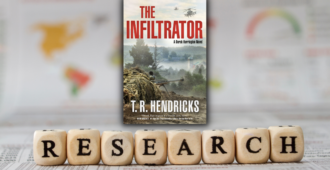Written by Rhiannon Held
As a professional archaeologist and a writer, there’s one question I get pretty consistently: “Do you use archaeology in your writing?” Some of the people asking that essentially want to know if I’m rewriting Indiana Jones (No). Others assume I must use archaeology to create vast ancient civilizations for my epic fantasy world. The answer there is also no—see below for what I do use it for—but the fact that people make that assumption has always interested me.
In many ways, it parallels a difference in the academic world: in Britain, and by extension Canada, Archaeology is organized as a department under History. In the US, it’s under Anthropology. I’ve heard it explained that this grew out of the fact that in Old World, early archaeologists were often studying the antecedents to their own culture, which had written records going pretty far back. In the New World, early archaeologists were studying cultures unrelated to themselves, which didn’t have written records in many cases.
And what most people picture when they picture archaeology is definitely the Old World. Ruins, ancient civilizations, gold artifacts. The most common response I used to get to “Oh, I’m an archaeologist” is “Have you ever been to Egypt?” So when that’s your picture of archaeology, it makes sense that the fantasy world-building you’d use it for would be elven ruins, ancient mage civilizations, and adamantium artifacts.
But what about archaeology based in anthropology? I was trained in the US and my thesis was on Native baskets of the Northwest, so my grounding was very much in how to get insight into a people when they haven’t left you anything written. How do people organize themselves in groups? Where do they choose to look for food? Where do they trade? How do they choose their decorations to maintain that group identity?
I’ve found that kind of archaeology to be amazingly fruitful for urban fantasy. If the world in an urban fantasy novel is going to be anything like ours, there can’t be grand werewolf temples littering the landscape, or history would have taken a much different course. It’s more likely the creatures have few or no written records to allow them to hide from humans. Then, if you give your fantasy creatures a cohesive cultural and group identity, you can draw on plenty of human cultures for comparison. That’s the reason why I chose not to have turned werewolves in my world, because a turned werewolf is by definition born into a non-werewolf culture.
So, then, how do your fantasy creatures organize themselves? What decorations do they use to identify themselves? Studying a hunter-gatherer culture, I might look at a basket design that appears in two different valleys, and use it to explore whether the people living in those two different valleys thought of themselves as part of the same group. For an urban fantasy werewolf culture, I might give one group of werewolves taboos about using silver on each other, and the other a long history of using it for punishment—if you treat silver one way, you’re one of Us, if you treat it the other way, you’re one of Them. Group identity.
Of course, harkening back to my academic days, I have to state my assumption: to use human anthropological principles, you have to assume your creatures are at least somewhat human. Speculative fiction has certainly explored species and creatures whose reactions differ from humans’ in interesting ways, but I find having creatures that are human enough to hold a mirror up to us is just plain fun.
And the most fun part is when you illustrate aspects of human culture that are so internalized, people don’t even realize why it makes your werewolves feel so real. If werewolves have religion, it makes sense they’d have religious heresies. It makes sense they’d have origin stories. It makes sense they’d have songs. It makes sense they’d have a silly childhood games. Just like we do.
And all of that fun stuff comes from broadening our use of archaeology in fantasy away from historical temples and golden artifacts.
…………………………
From the Tor/Forge June newsletter. Sign up to receive our newsletter via email.
…………………………
More from the June Tor/Forge newsletter:
- Journey to Planet JoCo: “Todd the T1000” with John Scalzi and Jonathan Coulton
- Why is Your Noir So, Um, Dark? by Warren Hammond
- It’s a Character Thing by J. A. Pitts
- Exploiting the Multiverse for Fun and Profit by Paul Melko
- Summer Manga Sweepstakes








Reblogged this on straykatstrut.
Makes perfect sense to me. The White Wolf games, in particular, explore this. Different supernaturals (inc. werewolves) DO have culture and anthropology to them.
Not enough books follow suit.
As an anthropology/archaeology student I found this article to be quite reinvigorating! Sometimes I feel like the discipline can often be too closed off and arcane. It is great to hear about how you use their frameworks and concepts in your work, I think more anthropologists should strive to look for connections to the field from other fields. I look forward to seeing your future work!!